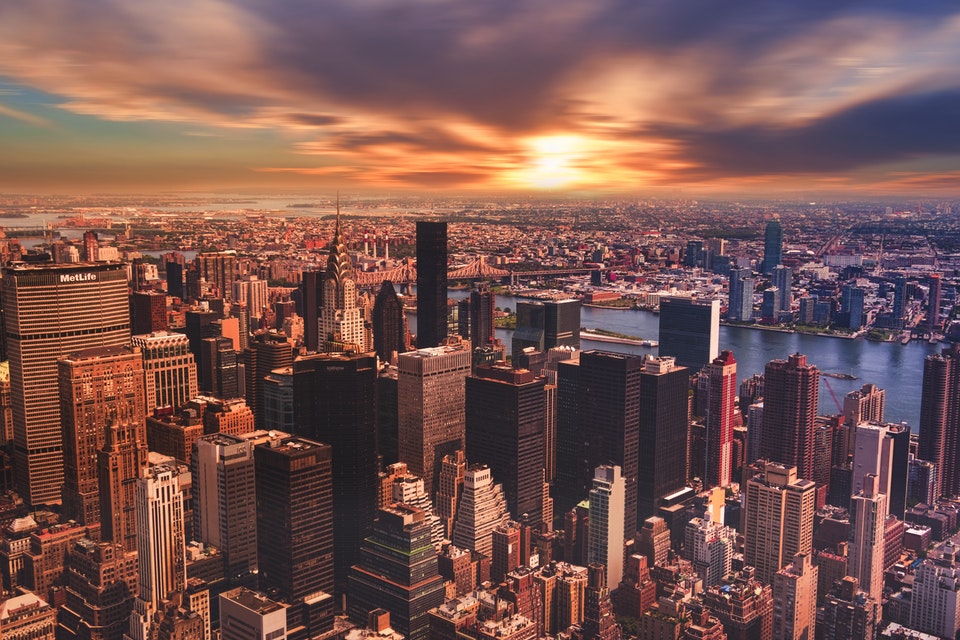Moving to this beautiful city certainly brings with it a bit of stress. You must have been worried about whether everything would go well, whether you would forget something and how the move would go. Now that you’ve moved, getting to know the neighborhood, the neighbors, the subway is an added burden. Maybe all this will create a little confusion in your head. So here you will find out what are the things you must do after moving to NYC.
If you are moving to New York, get help from a Verified moving company. Make it easier for yourself. With all the New York hustle and bustle, it’s easy to feel overwhelmed. But don’t worry, NYC isn’t terrible. New York City is a city full of fun, happenings, and choices. You are sure to find something that will interest you and what you will be doing. But either way, there are things in New York that you shouldn’t miss.
Here are the top 10 things you must do after moving to NYC:
- Eat brunch
- Use subway and a cab
- Eat all the street food
- Do an international food tour
- Be in the audience for night shows
- Watch a Broadway Show
- Don’t miss Central Park
- Skate in Wollman’s Rink
- Walk across Brooklyn Bridge
- Ride the Staten Island Ferry or East River Ferry.
You are not a true New Yorker until you go for a brunch
New York is well known for brunch. Almost every New Yorker has their favorite brunch spot. It has become a part of their culture and they are very happy to do it. Brunch is a great way to start both your day and your life in New York. There are so many restaurants around town that you can eat at a different one every day. Invite new neighbors for a brunch! This is for sure one of the things you must do after moving to NYC.
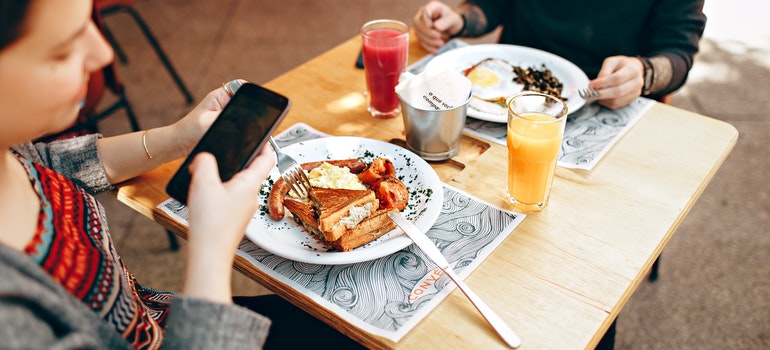
Brunch is a must for New Yorkers
Go explore subway
The subway in New York is very easy, don’t worry. You will learn lines and cells very easily. But if you miss the station, you can ride the entire subway on one fare. The good thing is that the sooner you learn the subway, the less money you will give for uber and cab. In case you didn’t know, there are often musicians performing on the subway. Free concert, right? Musicians go through auditions, and they’re often good, don’t worry.
Grab a cab
Although New York is known for traffic jams on the streets, especially traffic jams, you must have experience driving a cab. Stand on the street, waving a free cab and in a minute you will have the experience of every New Yorker. The crowd is quickly created, but that’s the charm – to be late for a meeting once and blame the cab. Joke aside, taking a cab is quite expensive, and after that experience look to go on foot or by subway.
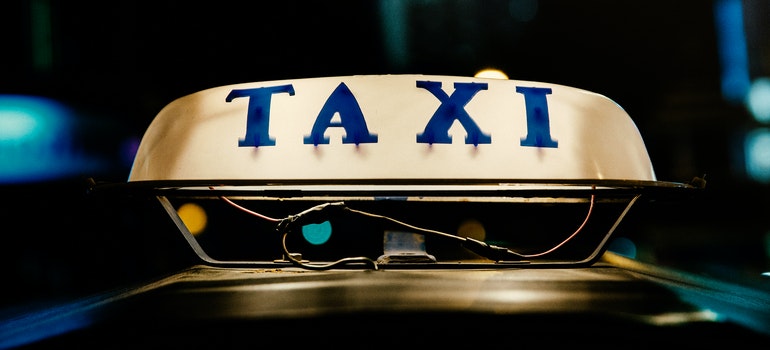
You are not a real New Yorker until you get stuck in a traffic jam
Food in NY streets is delicious
At every corner of New York, you can find a food stall. Street food in New York is very good. Original hot dogs or roasted chestnuts are often sold. Don’t be afraid to eat something that is sold on the street, hundreds and hundreds of people eat there every day. This can be a great family fun activity, right?
Go for a food tour
As New York is a city where many immigrants live, so it got different cuisines. Moving to New York is your chance to try specialties from different parts of the world. Expand your horizons and tastes and try specialties such as Ukrainian, Thai or Jewish cuisine.
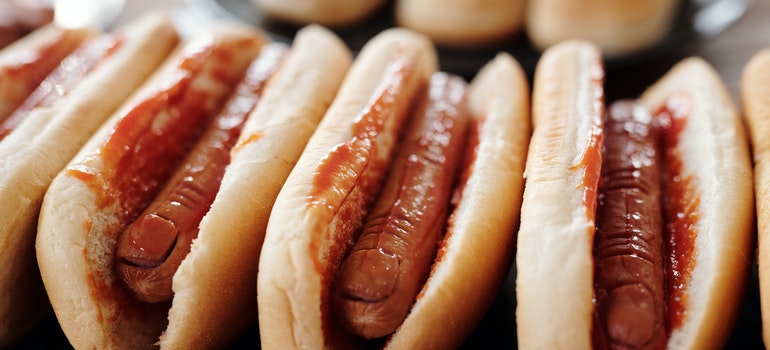
The most known street food is hot dogs
Entertainment in NYC is everywhere, be a part of it
Many TV shows are being filmed in NYC. But New Yorkers often don’t go to those shootings. This is a chance to take part in the recording of a show you like. Do that until you start to feel like a New Yorker, after that you won’t want to leave.
Watch a Broadway Show
Broadway tickets are really expensive. Unless you are bass with the intention of setting aside money for it, you will hardly decide to set aside now that you are exploring NY and spending money on every corner. That certainly doesn’t mean you won’t watch any Broadway shows. All you have to do is show up to the theater on a day where you have nothing else to do, and enter your name in. If you are pulled out, voila – free ticket!
The majestic – Central Park
New York’s most famous park is definitely something you should not miss. Everything is full of greenery and people. From the baseball field to the Carousel, to the duck puddles. You can’t feel bad here. Whether you go alone, with a partner, child, company, or home, you will be fine. If you have a dog, this will help him to feel relaxed in new surroundings. Central Park is called the backyard of New York.
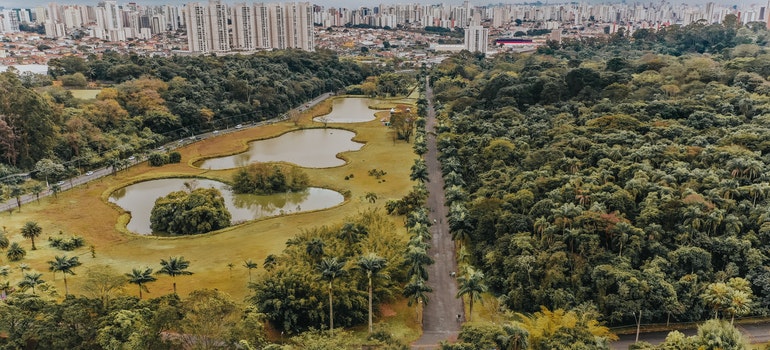
Central Park is beautiful all year round
Skate in Wollman’s Rink
Nestled in the heart of Central Park, Wollman’s Rink is an ideal spot to visit. In summer it is a small amusement park, while in winter it is a skating rink, mostly for the elderly. Dress warmly, invite friends, put on skates, get hot chocolate and enjoy!
Walk across the Brooklyn Bridge
A walk across the Brooklyn Bridge is an essential step you must take. Do not miss the opportunity to enjoy both the beauty of the bridge itself and the view from it. When you cross the bridge, you can have lunch in the park. And don’t worry, you can eat dessert, you’ll burn those calories on the way home.
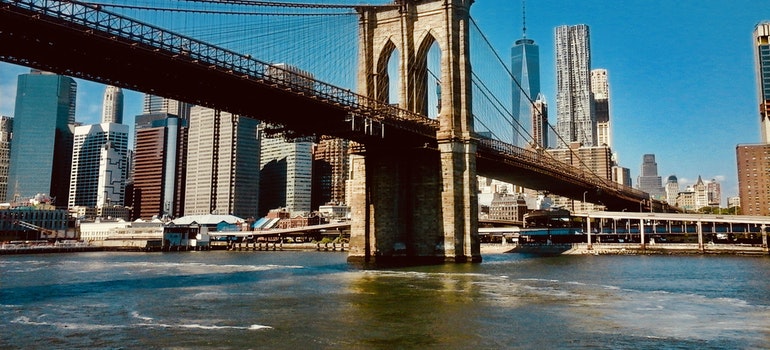
Walk across the Brooklyn Bridge
Ride the Staten Island Ferry or East River Ferry
If you want to experience sailing with a good view, ride on the Staten Island Ferry or East River Ferry is something you should not miss. Staten Island Ferry is free. East River Ferry is a great option to get to Brooklyn if you don’t feel like taking a subway. This is a phenomenal opportunity to add a little color on a beautiful, sunny day, to enjoy the waves. Bring your favorite drink or food and relax.
Prepare free time to try everything New York has to offer. This is a city where you can’t be bored at any time. Choose something to visit every day or every weekend. There is a multitude of things you must do after moving to NYC, you will surely find something for yourself.
